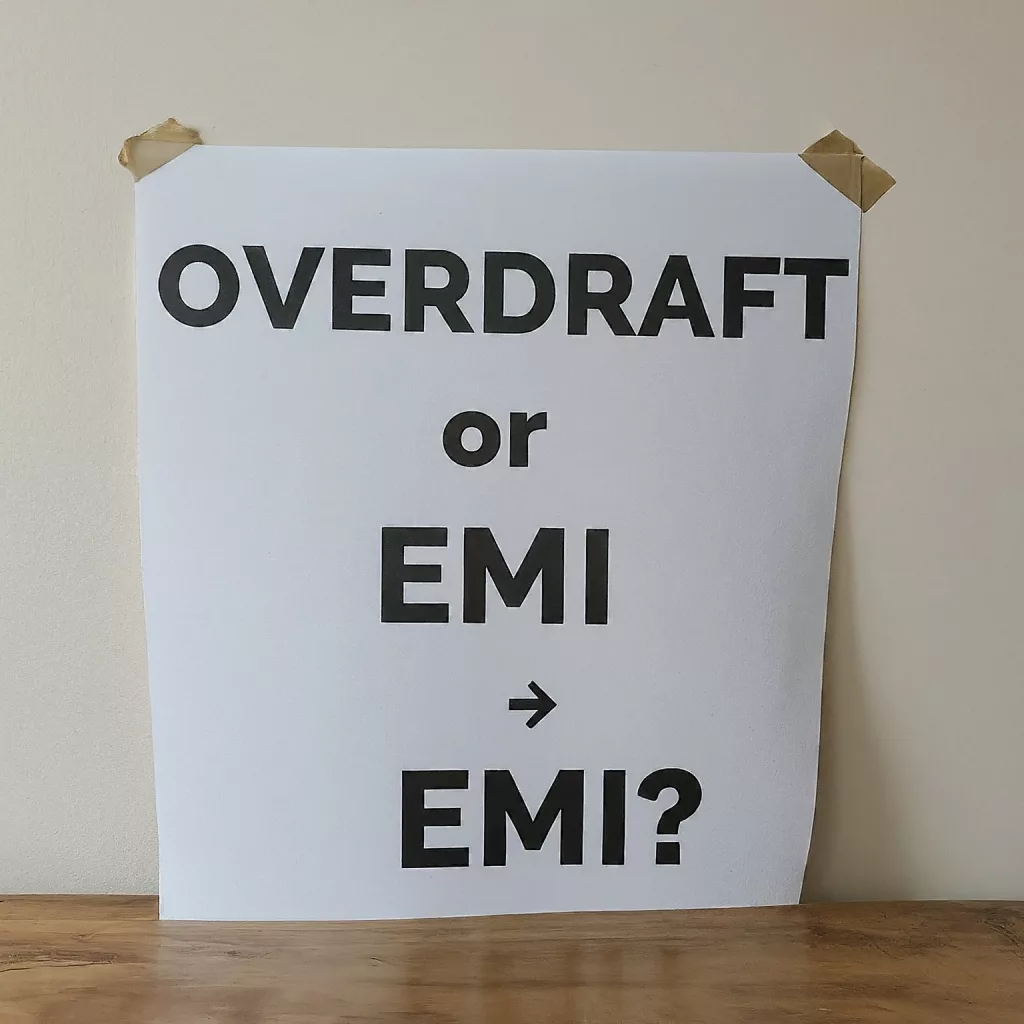Loan Against Property: Should you go for Overdraft or EMI?

If you need money and own some property, then you can get a loan against property i.e. by mortgaging it with a bank. Banks typically lend anywhere between 40-60 percent of the property’s market value. Here, you have two choices – you can take the entire loan amount as a lump sum and repay in equated monthly installments (EMIs), or as an overdraft account. An overdraft is a facility that allows you to withdraw more money than what you have in your bank account, subject to certain limits.
The advantage of taking a loan against property using the overdraft option is that you have to pay interest only on the money you withdraw, till the time you repay it. But if you opt for a lump sum and choose to repay in EMIs, you will have to pay the interest on the entire amount throughout the tenure of the loan. Let’s take an example. Suppose Mr. Kumar has mortgaged his house for a loan of Rs 10 lakh and opts for an overdraft on his existing account with the same bank. Now, if Mr. Kumar withdraws Rs 5 lakh, say on the 20th of the month, and repays Rs 3 lakh on the 28th of the month, he will have to pay interest on Rs 5 lakh only for eight days. After the 28th of the month, he needs to pay interest only on Rs 2 lakh, till the time he repays that amount.
This seems pretty tempting compared to the EMI option, but there are some things you need to know. First, only banks give you the overdraft option, since housing finance companies do not have savings/current accounts for individuals. Also, banks may charge a higher processing fee on the loan if you want to take it as an overdraft, rather than as a lump sum. This is because you may or may not use the credit limit for a while; in which case, the bank will lose the interest it can earn on the amount you haven’t withdrawn. Besides, you will have to pay the processing fee every year in the case of overdrafts, but only once in the case of a lump sum loan. Overdrafts also attract a higher rate of interest (normally around 0.50 percent extra). Therefore, it’s advisable to choose the lump sum-EMI option, if: You do not expect any significant cash flows with which you can repay large chunks of the loan in the near future (since interest rates are higher for the overdraft option)
The rate of interest on the overdraft facility is much higher than that of the EMI option Overdraft option for LAP Installment option for LAP This option is available only with banks offering LAP This option is available with banks as well as housing finance companies offering LAP, might attract a higher processing fee, not one-time, but annually Processing fee will be one-time. Will also attract a higher rate of interest (usually 0.5%) compared to the installment option Slightly lower rate of interest You pay interest only on the money you withdraw from the overdraft account to the extent you do not repay. You can keep withdrawing and repaying money as and when you like and incur interest expenditure only on the net outstanding amount from time to time. You pay money on the reducing balance of the loan amount outstanding as per the contract








